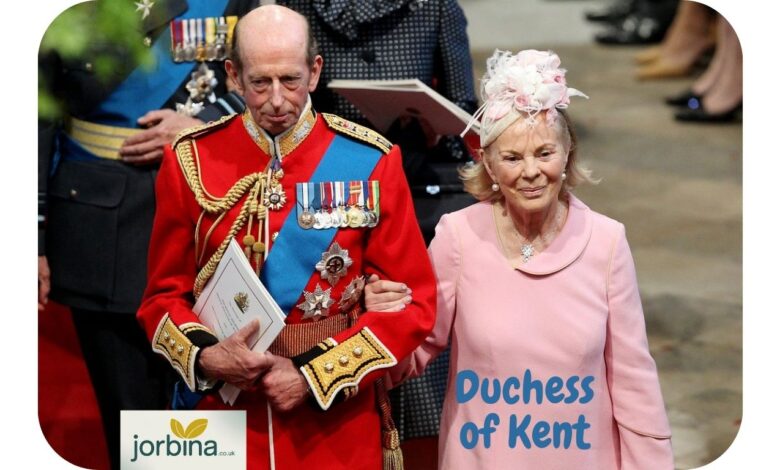How the Duchess of Kent Quietly Shaped the Monarchy

Have you ever wondered how much influence one person can have on a royal dynasty? When we think of British royalty, names like Queen Victoria, Queen Elizabeth II, or King Charles come to mind. Yet behind the big figures, there are often quieter characters whose decisions and presence change history in subtle but lasting ways. The Duchess of Kent is one of those figures.
She may not be the most famous royal, but her choices helped shape the monarchy we know today. So who was she, what role did she play, and why should we remember her? Let’s dig into her story.
The Early Life of a Future Duchess
Before she became the Duchess of Kent, she was Princess Victoria of Saxe-Coburg-Saalfeld. Born in Germany in 1786, she grew up in a world of courts, traditions, and alliances. Her family wasn’t at the very top of European nobility, but they were deeply connected to powerful houses across the continent.
Her upbringing gave her a strong sense of duty. Life in smaller German courts was different from the grandeur of Britain, but it prepared her for the balancing act of politics and personal choices. As a young woman, she married Prince Charles of Leiningen, and for a time, she lived the life of a German princess. She was widowed young, though, which changed the entire course of her future.
A Second Marriage That Changed Everything
After the death of her first husband, she remarried. This time, it was to Prince Edward, Duke of Kent, the fourth son of King George III. The match was practical for both sides. Edward needed to secure the royal line, and she needed security and status.
Together, they had one child: Princess Alexandrina Victoria. You probably know her better as Queen Victoria. That single birth shifted the duchess’s role from a secondary royal to the mother of a future queen.
Her husband, the Duke of Kent, died when their daughter was less than a year old. That loss placed the Duchess of Kent in a unique position. She was suddenly a widow again, but now with a child who was in direct line for the throne.
Raising a Queen in Waiting
Imagine being the single mother of a little girl who could one day rule the British Empire. The Duchess of Kent didn’t have the luxury of raising her daughter in a private bubble. She had to think about duty, politics, and safety.
She created a structured system for her daughter, later called the Kensington System. This strict routine limited young Victoria’s contact with other children and even with parts of her extended family. The idea was to keep her safe and under control. It also aimed to prepare her for the heavy responsibilities that might one day fall on her shoulders.
Some historians have criticized the system as too controlling. Others argue it gave Victoria the discipline and resilience she later displayed as queen. Either way, the Duchess of Kent played a direct role in shaping her daughter’s personality and approach to power.
A Complicated Relationship With Her Daughter
It wasn’t always smooth sailing between mother and daughter. In fact, their relationship became strained as Victoria grew older. The future queen resented the control of the Kensington System and the influence of her mother’s close advisor, Sir John Conroy.
Conroy tried to position himself as the power behind the throne. Victoria resisted fiercely, and this created tension not just between her and Conroy but between her and her mother as well. When Victoria became queen at 18, she wasted no time distancing herself from her mother’s household.
Still, despite the rocky relationship, the Duchess of Kent remained a presence in Victoria’s life. Over time, the tensions eased, and their bond softened, especially after Victoria married Prince Albert.
The Duchess of Kent as a Political Figure
While she wasn’t a queen herself, the Duchess of Kent had political weight. As the mother of the heir, she held influence in court circles. Some saw her as ambitious, especially given her reliance on Conroy. Others saw her as protective, determined to shield her daughter from the dangerous intrigues of the royal family.
Her foreign background also shaped how people viewed her. In a Britain that often looked at outsiders with suspicion, her German heritage was sometimes a point of criticism. Yet she managed to hold her ground. Her position as the mother of the future monarch ensured that she couldn’t be easily pushed aside.
If you’d like a short visual take on her life, here’s a helpful YouTube video on the Duchess of Kent’s story.
Why the Kensington System Mattered
The Kensington System might sound like just a strict parenting style, but its impact went beyond childhood discipline. By limiting Victoria’s independence and carefully managing her social interactions, the Duchess of Kent and Conroy hoped to make Victoria dependent on them.
That plan failed once Victoria came to the throne. Instead of submitting to their control, she rebelled. But here’s the twist: the very system designed to control her may have strengthened her resolve to be independent. It shaped her sense of self, making her determined not to let others dictate her life.
So in an ironic way, the Duchess of Kent’s methods helped mold a queen who would become one of the most independent and powerful monarchs in British history.
The Later Years of the Duchess of Kent
After her daughter took the throne, the Duchess of Kent’s role shifted. She no longer had the same level of influence in Victoria’s daily life, but she remained part of the royal household.
Her relationship with Victoria warmed as the years went on, especially after the birth of Victoria’s children. Grandchildren often soften old wounds, and the Duchess of Kent enjoyed her role as a grandmother. She lived long enough to see Victoria firmly established as queen, which must have given her a sense of pride.
She died in 1861 at the age of 74. Her death came just months before the death of Prince Albert, an event that devastated Queen Victoria.
Her Legacy in the Monarchy
The Duchess of Kent is not remembered with the same reverence as her daughter, but her influence lingers in subtle ways. She shaped the early years of Queen Victoria, who went on to define an era. She also showed the resilience and adaptability required of royals who are often caught between personal desires and public duty.
Her story reminds us that not all royal figures are loud or glamorous. Sometimes, the quiet ones behind the scenes play the most important roles. Without the Duchess of Kent, the Victorian era as we know it might never have unfolded.
Lessons From the Duchess of Kent’s Life
What can we learn from her today? First, that influence doesn’t always come from holding the top position. She never wore the crown, but she shaped the life of someone who did.
Second, her story highlights the tension between control and independence. Her strict methods created conflict, but they also set the stage for her daughter’s strength. That paradox is fascinating, and it reminds us that sometimes our biggest frustrations shape us into who we become.
Finally, her life shows the importance of resilience. Twice widowed, often criticized, and caught in political storms, she still managed to carve out a lasting role in history.
The Royal Family’s official site: A trusted reference with authoritative details on her biography, her musical passions, and her public service. The Royal Family
Why We Should Remember Her
When people think of the Duchess of Kent today, they often see her only as Queen Victoria’s mother. But that’s too narrow a view. She was more than just a supporting character. She was a woman navigating the challenges of royal life in a turbulent period, making decisions that had ripple effects far beyond her own lifetime.
By raising Victoria, she shaped not only her daughter but also the future of the British monarchy. And though she worked quietly, her fingerprints are all over one of the most important reigns in British history.
Closing Thoughts
The Duchess of Kent may not headline the royal stories we tell, but she deserves more attention. Her life was marked by struggle, ambition, and determination. She was a widow, a mother, a strategist, and a survivor.
So next time you hear about Queen Victoria and the age that bears her name, remember the woman who raised her. The Duchess of Kent quietly shaped the monarchy, and her legacy still echoes in history’s pages.
FAQs
What has happened to the Duchess of Kent?
Queen Victoria’s mother, the Duchess of Kent, passed away in 1861 at the age of 74.
How is the Duchess of Kent related to the Queen?
She had a significant influence on Victoria’s early life because she was the mother of Queen Victoria.
Where does the Duchess of Kent live?
She spent the majority of her life with her daughter at Kensington Palace.
Why did the Duchess of Kent stop going to Wimbledon?
Due to health concerns and a desire to retire from public service, the current Duchess of Kent (Katharine, the Queen’s cousin’s wife) stopped going to Wimbledon regularly in the 2000s.
Can the British royal family marry a Catholic?
Indeed. Royals are permitted to wed Catholics since the Succession to the Crown Act was amended in 2013, but the monarch must continue to be in communion with the Church of England.



